Note: This website was automatically translated, so some terms or nuances may not be completely accurate.
Dialogue between Art, Citizens, and Administration: Learning from the Münster Sculpture Project about the Relationship between Region and Art

Higashi Naruki
Hello. I'm Shigeki Higashi from Dentsu Inc., in charge of the art-related project "Art Circuit." Art Circuit is a cross-organizational team within and outside the company, with members including collectors, researchers, and even artists. On March 7, 2017, we held a lecture themed "Creating Work Through Art," which was attended by 200 people from both inside and outside the company.
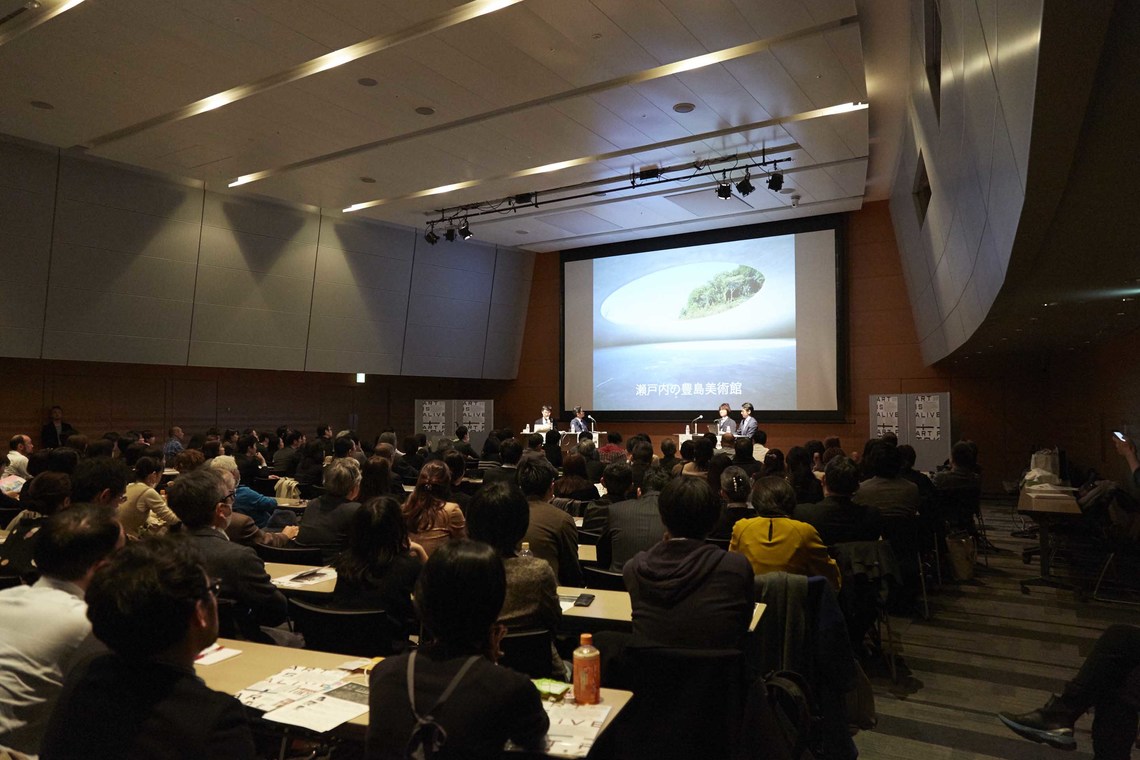
Japan's art market has significant room for growth. Our mission is to connect diverse individuals involved in art and create a "circuit." We aim to help elevate the value of art by fostering a cycle where Japanese works receive critical attention both domestically and internationally, increase in value, and ultimately find their way into the hands of museums and collectors.
Contact: Bijutsu Circuit kairo@dentsu.co.jp
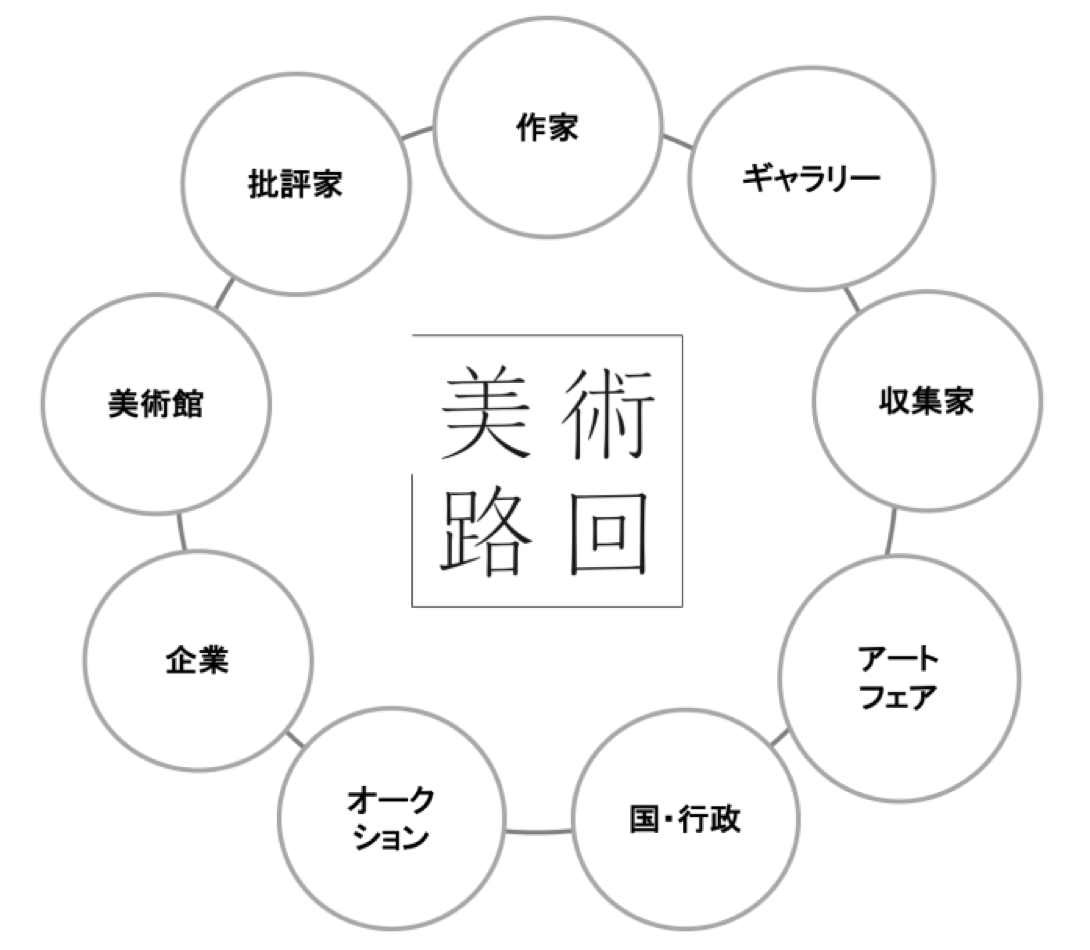
2017 was a once-in-a-decade year for art festivals. The biennial Venice Biennale (Italy), the quinquennial Documenta (Germany), and the decennial Münster Sculpture Project (Germany) all coincided.
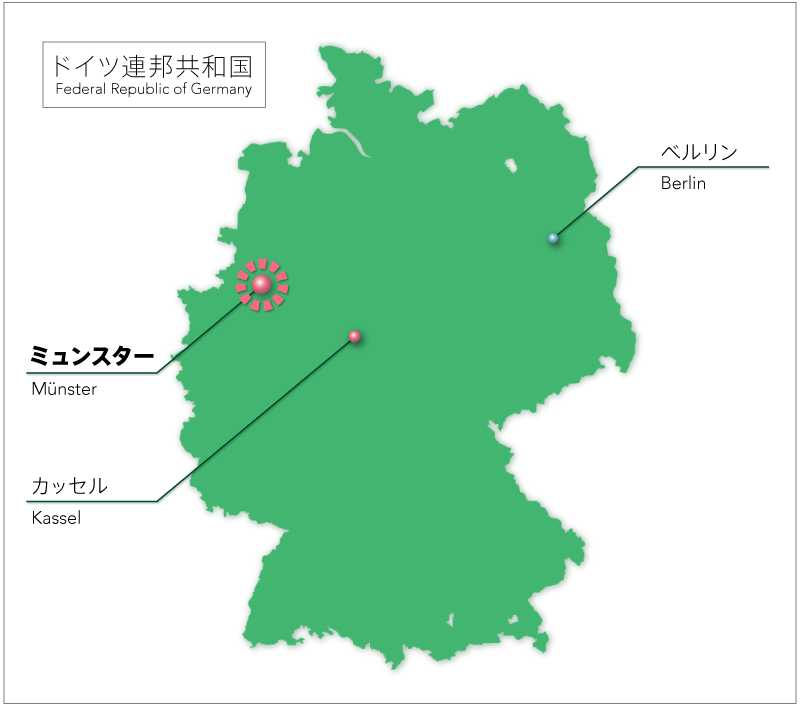
Regional art festivals are also thriving in Japan, and there is much to learn from these historic global events. As a press representative, I visited the Münster Sculpture Project and Documenta twice each to explore what constitutes an art festival that leverages regional potential. Can artistic independence be maintained in festivals collaborating with government? What is the relationship between curators and government/sponsors? Is local understanding secured?
With these questions in mind, I interviewed three members of the Münster Sculpture Project's management team, including its representative, Imke Isen.
The first half of the article introduces representative works from this once-in-a-decade festival. The second half features interviews with the organizers.
The Beginning: Citizen Protests Against Abstract Sculpture
First, let's look at the origins of the Münster Sculpture Project.
In 1973, the city of Münster planned to purchase George Rickey's work "Three Rotary Squares" for 130,000 German marks (13,464,100 yen* calculated using the 1973 exchange rate from the Statistics Bureau, Ministry of Internal Affairs and Communications [same below]: 1 mark = 103.57 yen). However, citizens flooded the city with harsh comments like, "What on earth is this?" Münster has traditionally been a conservative region with strong Catholic Church influence, and at the time, understanding of modern sculpture was limited.
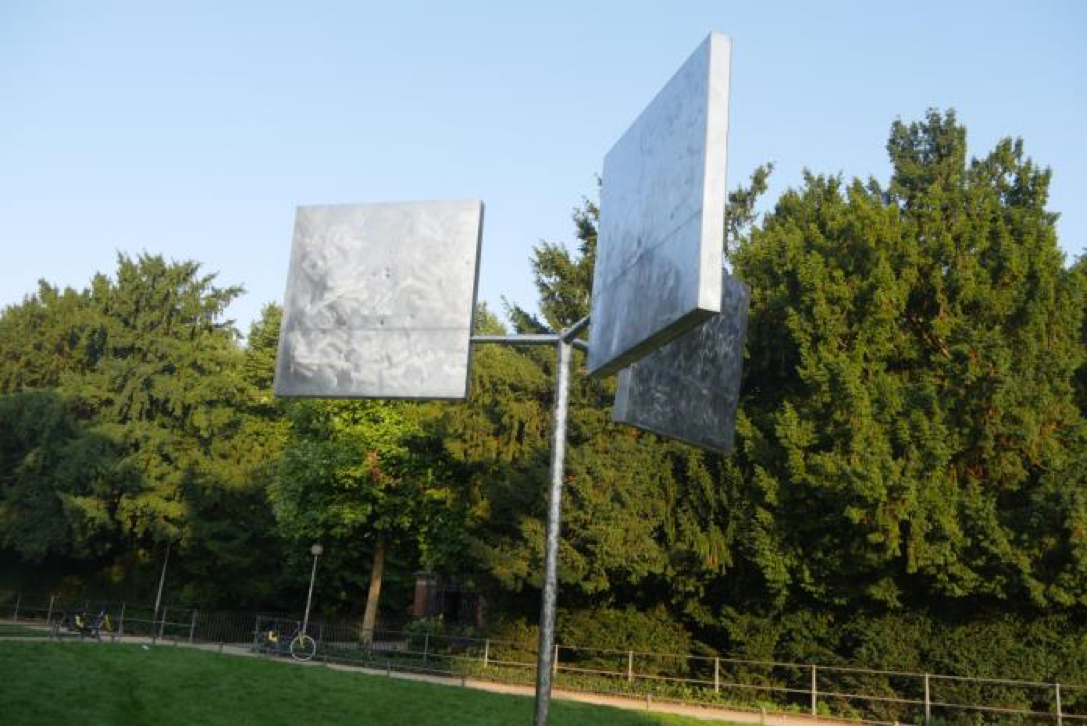
Seeing the public reaction, the city of Münster canceled the purchase. Instead, the local state bank acquired the work and donated it to the city. Even then, citizens reportedly protested to the bank.
Seeing the protests, Klaus Busmann, curator at the Westfalen State Museum, lamented the lack of understanding for contemporary art and resolved to convey the appeal of modern sculpture to the public. He approached Kaspar König (then in New York, now Artistic Director of the Münster Sculpture Project). König, who was active in the contemporary art world at the time—including involvement in "documenta 5" (1972) under curator Harald Szeemann—was also a native of North Rhine-Westphalia, the state where Münster is located. He gathered ten of the most cutting-edge artists of the time in Münster and organized an exhibition of contemporary sculpture. This was the first Münster Sculpture Project, where many citizens encountered the appeal of contemporary sculpture.
Reference: Kaspar König Interview (2017, ART iT)
Questioning the Relationship Between the Public and Art
The theme of the Münster Sculpture Project is questioning the relationship between art and public space. This has remained unchanged since the first edition 40 years ago. It requires dialogue and collaboration among the art team, citizens, and the administration to realize the works.
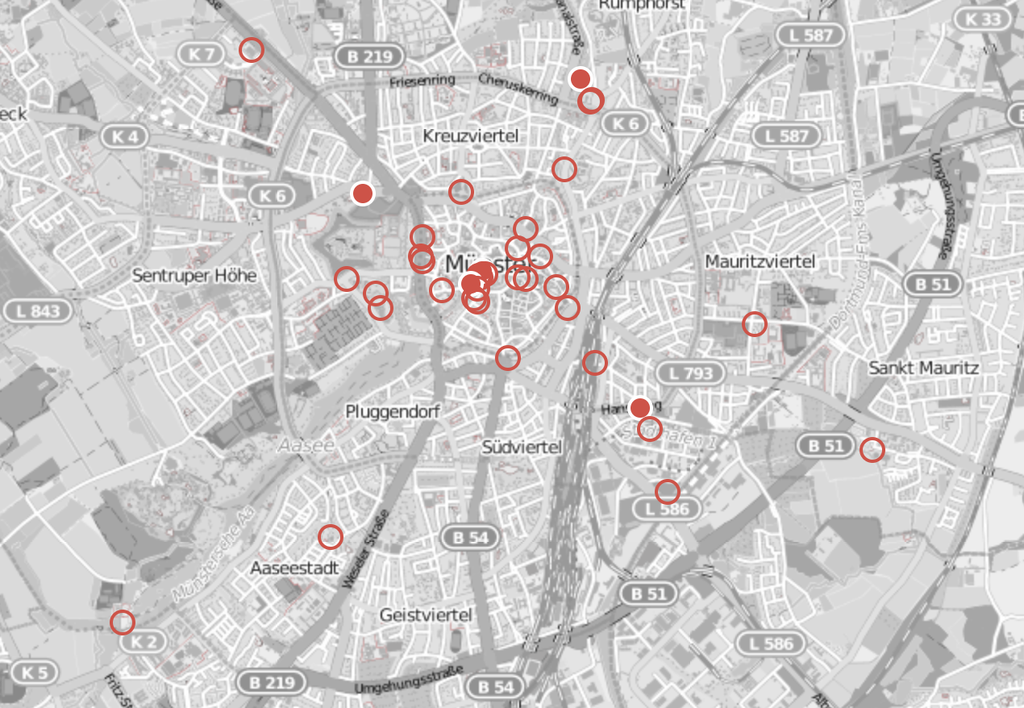
This year's Münster Sculpture Project featured works by 35 artists displayed throughout the city, as shown above. Viewing all works within cycling distance takes about two full days. We introduce the works while considering their relationship with public space.
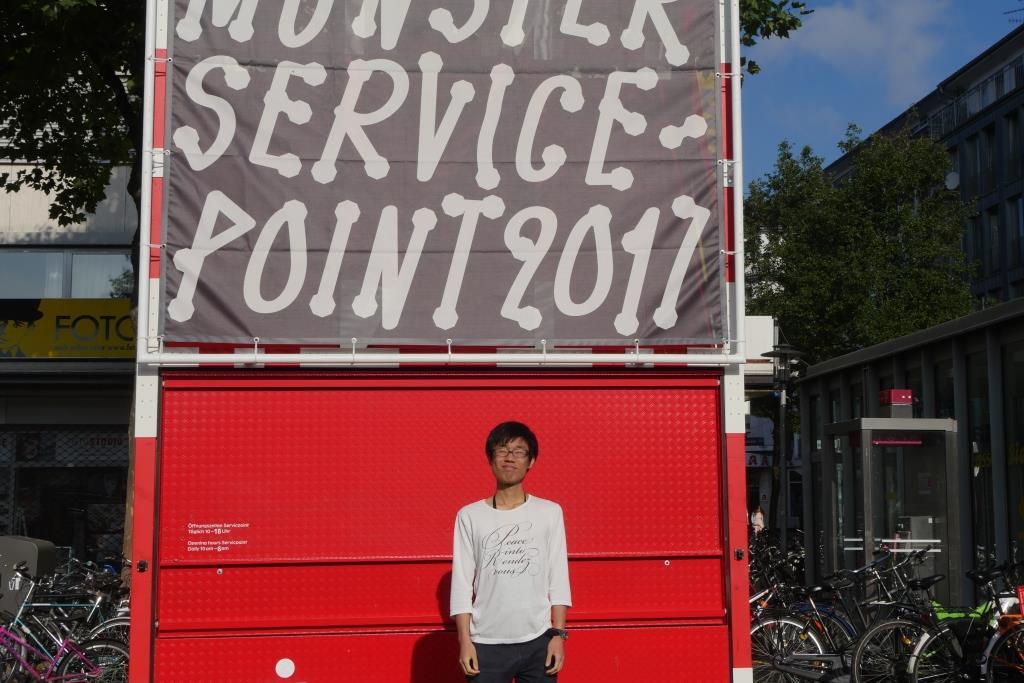
First up is Ayşe Erkmem's "On Water" (2017). This piece allows visitors to walk across the river by installing containers underwater like a bridge.

She was interested in how land is divided in urban development. How can we physically and mentally overcome these divisions?
Thus, she connected a residential area and a port separated by a river with an underwater bridge. Since one end was private property, the sculpture project's operational team confirmed permission for land use. They also installed safeguards to prevent people from falling into the river.
To realize the work, the team began preparations two and a half years prior, holding meetings with the city every two weeks during the final six months. This shows how the artist, citizens, and city collaborated to create the piece.
Next is Jeremy Deller's "Speak to the Earth and It Will Tell You" (2017). Books were distributed to 54 Kleingärten (community gardens) in Münster, inviting participants to keep diaries about their gardens from 2007 for ten years. This year, over 30 of these diaries were exhibited in small huts within the gardens.
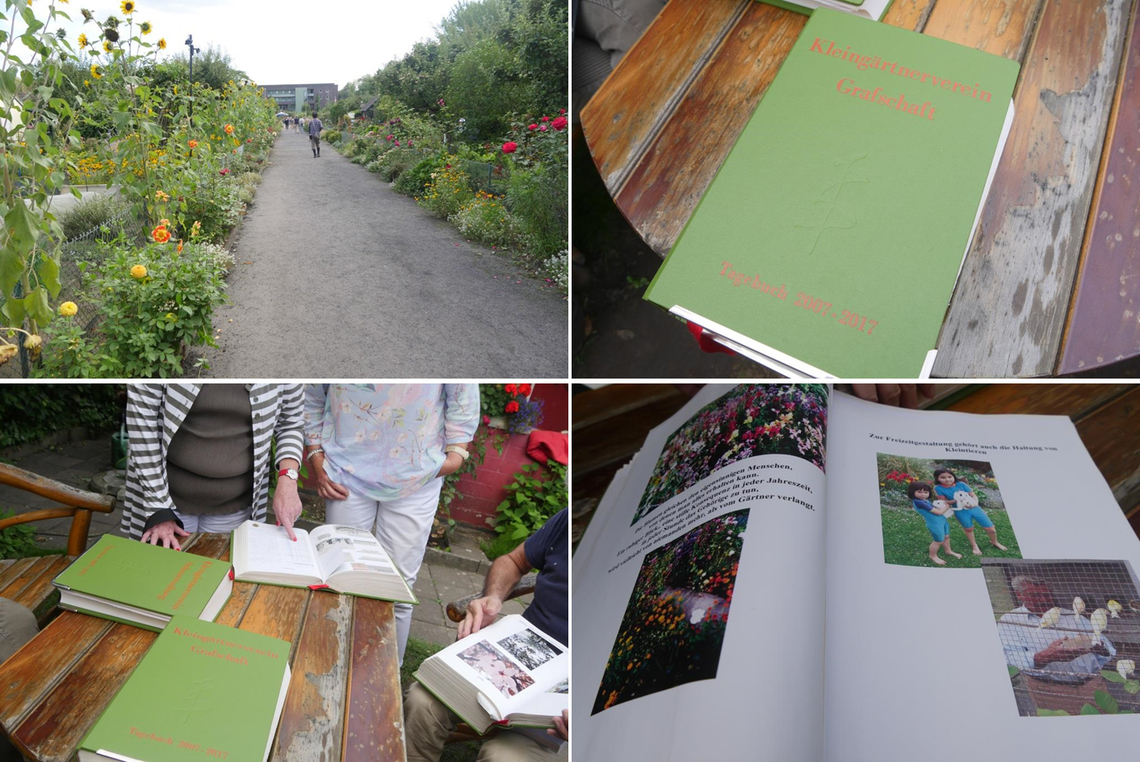
The diaries chronicle the growth of plants, temperatures, weather, and the daily lives of citizens. Capitalizing on the unique nature of community gardens, this work—created over a decade with citizens—is something only the Münster Sculpture Project could achieve.
Pierre Huyghe's installation "After ALife Ahead" (2017) utilized an indoor skating rink slated for demolition. Inside, equipment for culturing cancer cells (right in photo) was installed, and windows in the ceiling opened and closed according to the number of cells.
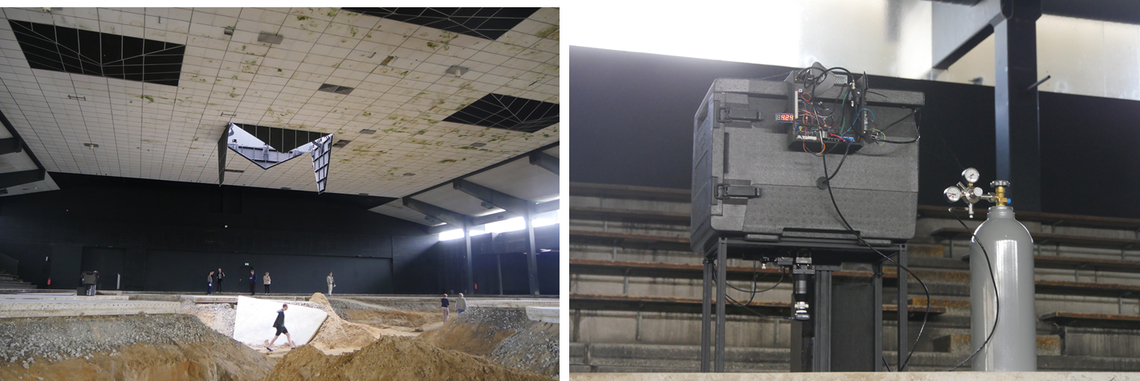
This skating rink, a place destined to vanish within Münster, allows rain to blow in and bees to come and go through the opening and closing windows.
It seemed as if an ecosystem existed independently, beyond human reach, governed by its own system. I thought the cancer cells represented the end of life, the bees symbolized life itself, and together they depicted a world after humanity had ceased to exist. This work overlapped the building's status as a vanishing structure within the community with the artwork's own worldview.
Among the invited artists for the Münster Sculpture Project, two Japanese artists were selected.
Ei Arakawa's installation "Harsh Citation, Harsh Pastoral, Harsh Münster" (2017) was an experience featuring images on LED screens and music.
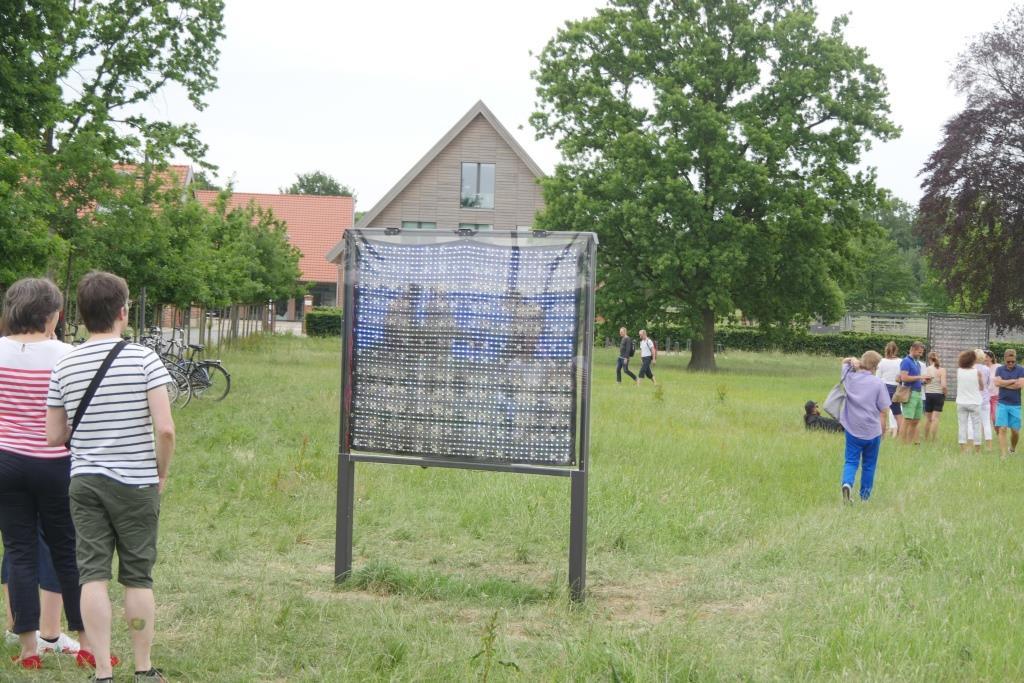

Additionally, Koki Tanaka's work "Provisional Studies: Workshop #7 How to Live Together and Sharing the Unknown" (2017) involved workshops with eight citizens living in Münster who did not know each other, centered on the theme of "coexistence with others." In the exhibition space, videos of the workshops were shown in four rooms.
What struck me was that this wasn't a tangible sculptural work. I had the chance to meet Mr. Tanaka at the opening and asked him about it. He explained that works like this, not limited to sculpture, have been part of this art festival for some time. Since the theme is public art, the work's theme of coexistence with others was a perfect fit.
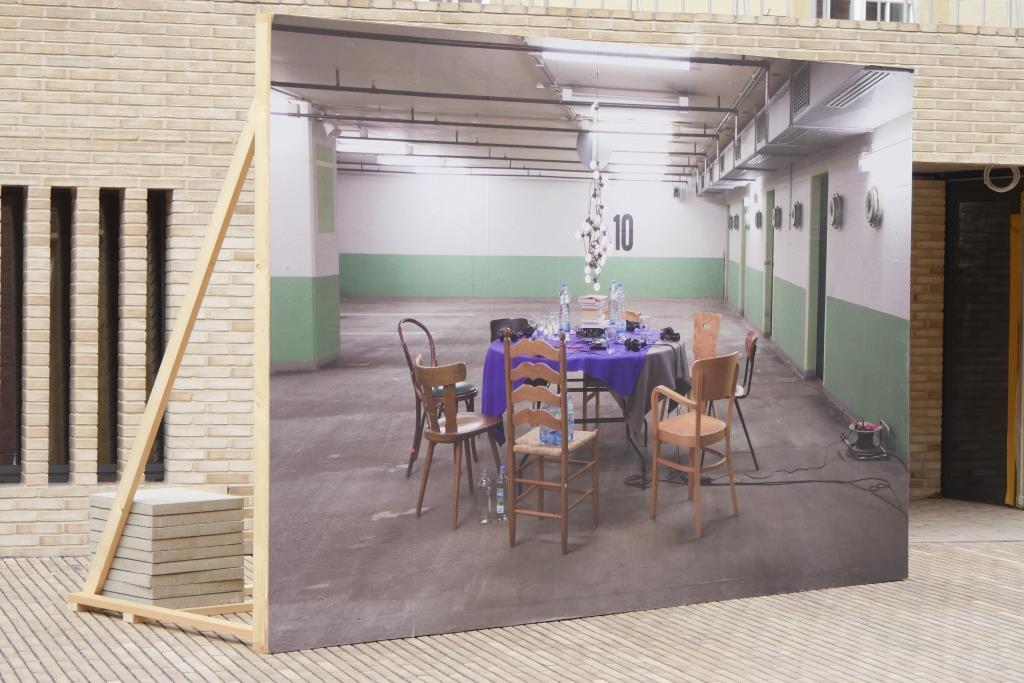
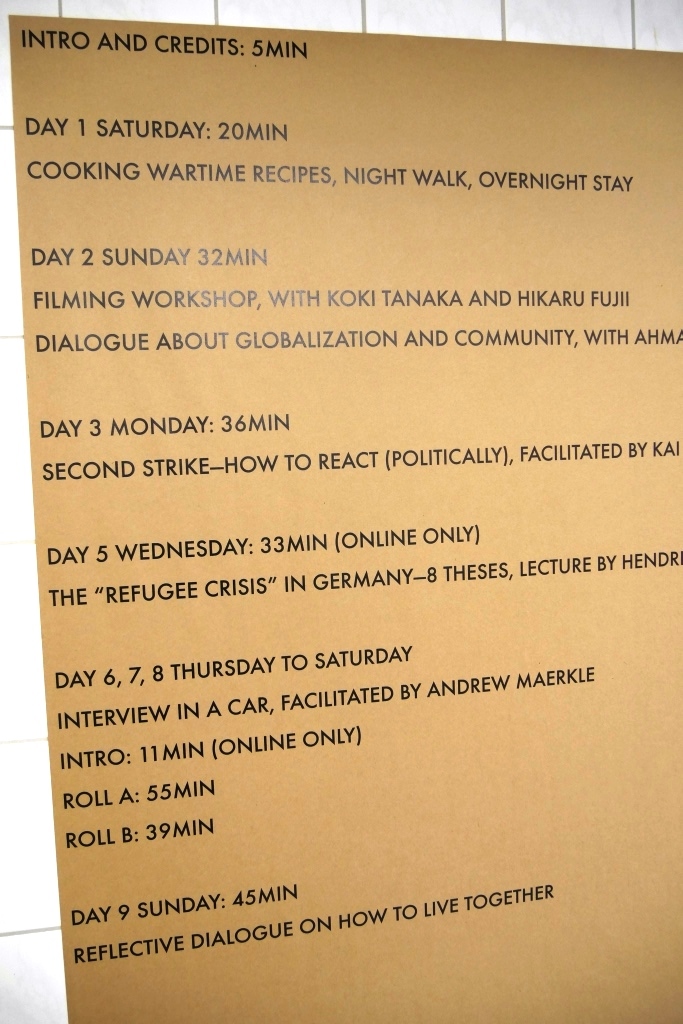
This work was honored to be purchased by the LWL Museum, the heart of the art festival. After the festival, the museum, curator, and city discuss which pieces they believe are worth preserving, and the city purchases only those deemed worthy for permanent display. I am delighted that a Japanese artist's work will continue to be exhibited in this historic city.
The Challenges of Displaying in Public Spaces
The works by Mr. Arakawa and Mr. Tanaka, introduced last, were stolen during the exhibition period. Mr. Arakawa's work had its digital panel stolen, while Mr. Tanaka's work had its equipment stolen.
- ‘This Is a Really Interesting “Performance” in a Way’: Ei Arakawa Work Stolen at Skulptur Projekte Münster
- Missing in Münster: Koki Tanaka Equipment Stolen from Skulptur Projekte
(This news didn't seem to get much coverage in Japan. It was international art media that broke the story.)
The stolen works were later reinstalled. This fact highlights the challenges of exhibiting art in public spaces. Unlike museums that protect works in enclosed spaces, outdoor venues face unpredictable visitors. They must endure weather, theft, graffiti, and potential damage.
The thrill of outdoor art lies in the experience of getting there. Rain might start falling, or you might wander around thinking, "The map says the work is here," only to notice it overhead. You might travel from one end of a lake to the other, finally encountering the piece, and feel it was worth the long bike ride. Seeing the work nestled among nature or residential areas is part of the fun of outdoor art.
So, what does the operations team do to make outdoor sculpture happen? We asked how they realized the project with the administration and citizens.
A Theme Unchanged for 40 Years
We asked members of the Münster Sculpture Project about the budget, theme, artwork selection process, and success metrics.
We spoke with Managing Director Imke Eisen, Press Officer Jana Duda, and Marketing and Communications Manager Ulla Gehrhardt.
The Münster Sculpture Project organization consists of three parts: "City (Administration)", "Museum", and "Sculpture Project Team". The "Sculpture Project Team" comprises three units: the Curatorial Team (3 curators and 3 assistants), the Project Team (responsible for realizing the works), and the Press Team (public relations and marketing). Managing Director Imke Eisen is responsible for the installation of the works.
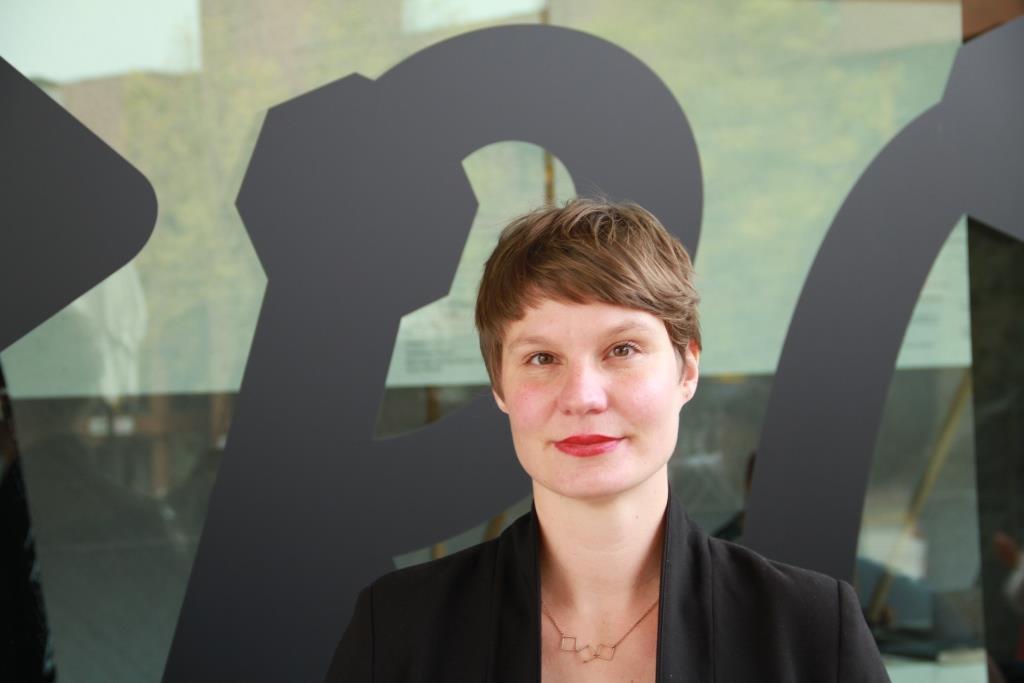
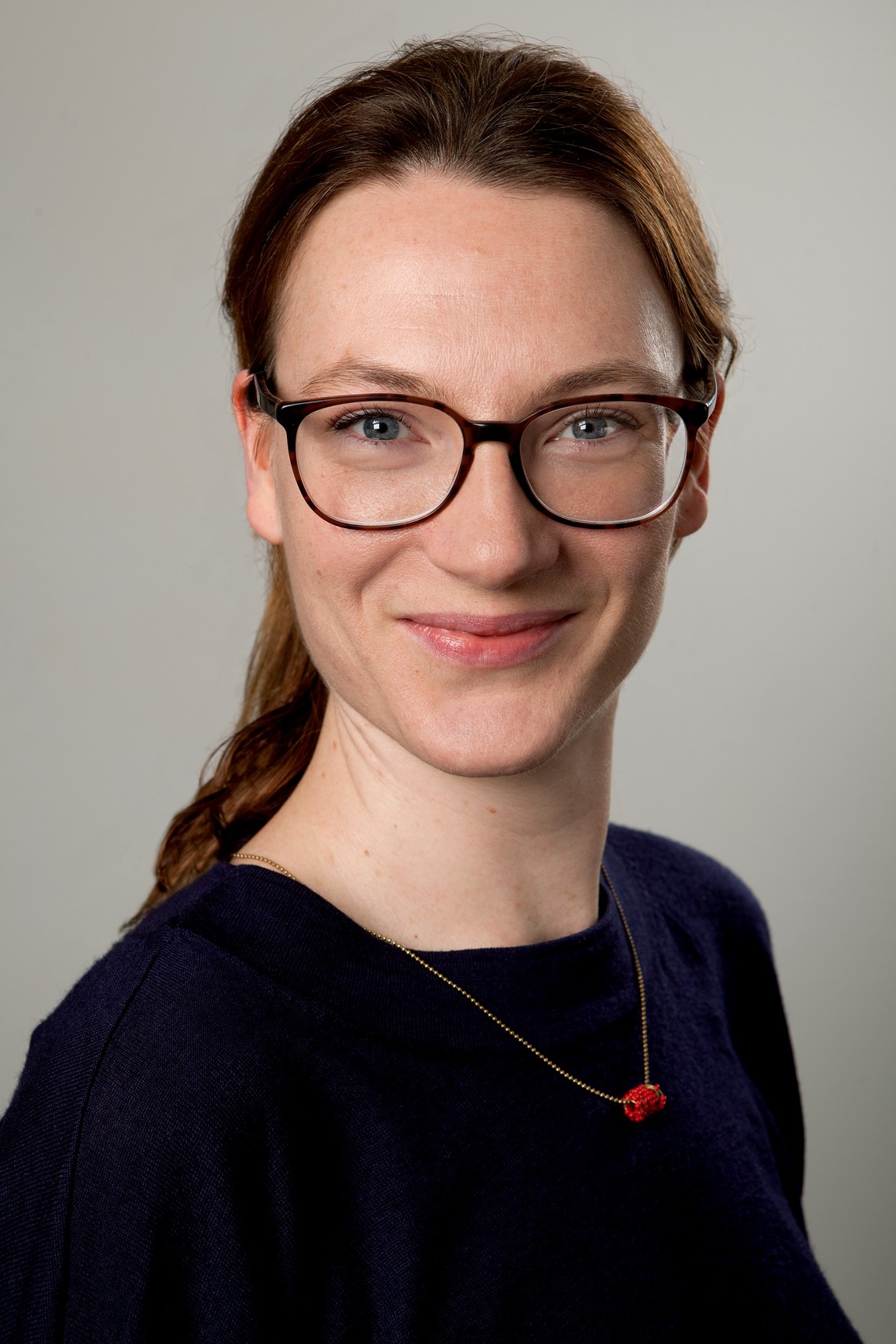

First, we asked Ms. Gehrhardt about the project's theme.
"The theme has remained unchanged since the first edition 40 years ago: 'The Relationship Between Art and Public Space.' The works are not for sale but for display, and they are generally removed after the exhibition period ends." (Marketing Communications Manager: Ms. Gehrhardt)
In this project, works are scattered throughout Münster, and this exhibition style embodies the theme "The Relationship Between Art and Public Space." Donald Judd's work from the first project still remains today. The view of the lake from above the work was magnificent, and even when viewed from the opposite side of the lake, the work blended seamlessly into the surrounding nature. It clearly demonstrates the importance of the relationship between the work and the location where it is exhibited.

What kind of city is Münster, anyway?
"The church held strong influence, which is why it has been a major city since ancient times. Thanks to the presence of the church, the university, and agriculture, the standard of living has always been high. It's precisely because it hasn't depended on industry that it has remained prosperous," (Press Officer: Mr. Duda)
Starting this time, we're also collaborating on a sculpture project with the neighboring city of Marl. What distinguishes Münster, which continues to rely on tradition, from Marl?
"After the war, Marl rebuilt itself through mineral extraction. However, the mining industry is now in decline. Their post-war reconstruction paths were also contrasting. After the city was destroyed, traditional-minded Münster repaired houses and restored the old townscape. In contrast, Marl was formed by merging several villages. They built a new city centered around the location where the sculpture museum now stands." (Mr. Duda)
It became clear that Münster historically values preserving the region's appearance, such as maintaining its townscape. Therefore, when placing artworks here, pieces that resonate with history and the environment are required.
Next, we learned about the process leading to the realization of the artwork.
"First, three curators invite artists through their respective networks. The artists visit Münster, submit proposals for the works they wish to create, and hold discussions with the curators. The team then verifies whether installation permits can be obtained and whether locations overlap between artists.
Obtaining the right to build takes 3 to 6 months. If the site is private property, additional permits are required. Also, because many bombs were dropped during World War II, we must be careful about unexploded ordnance. Once permission is granted, we move to the production phase, and the work must be completed within the deadline." (Managing Director: Mr. Issen)
It's clear that the project team led by Mr. Izen patiently coordinates with the administration and artists, supporting the artists' creative process. For example, the work by Ayşe Erkmem, walking on water, mentioned earlier, involved a demanding process from obtaining permits to implementation and safety measures. This is a story unique to outdoor sculpture.
So, what are the project's success metrics?
"If you asked Artistic Director Kasper König, he'd probably say 'there are no success metrics.' For him, the most important thing is the autonomy of the art. Sometimes choosing lesser-known artists is also for the sake of the art," (Mr. Izen)
"For the press, the key is how much international media coverage it receives. Controversy is fine. From that perspective, this year achieved high international recognition and was a success," (Mr. Duda)
Finally, what about the budget?
"This project began in 1977 under Mr. Busmann. Initially, the budget was under 50,000 marks (5.721 million yen* calculated at 1977 rate: 1 mark = 114.42 yen), yet from the very first edition, it featured global artists like Donald Judd, Richard Serra, and Joseph Beuys. By the third edition in 1997, the budget exceeded 6 million marks (¥860.94 million* at 1997 rate: 1 mark = ¥114.42), and over 100 artists were invited." (Mr. Issen)
What about the current project's income? What are the benefits for corporate sponsors?
"We don't charge admission, so there's no ticket revenue. This year's total budget is 8 million euros. The breakdown is: 1.5 million euros from the City of Münster, 1 million euros from the Westfälische Landesmuseum, 1 million euros from the Cultural Foundation, and 4.5 million euros from banks and insurance companies. Additionally, we receive equipment donations and electricity supplies, and each artist has their own sponsor.
Of course, only a limited number of organizations ask for specific favors in exchange for money. Especially in the realm of art, sponsorship is about contributing to the other party, isn't it?" (Mr. Izen)
From our discussions, it became clear that the sponsoring companies view art not as a means to an end, but as an end in itself, and possess a genuine commitment to supporting art.
Acting for the sake of art
What's crucial for the Münster Sculpture Project is that the team, led by the director, maintains a steadfast commitment to introducing art to the citizens.
While the project now attracts many tourists, it does not view art as a means for regional revitalization or tourism revenue. It values art's autonomy, setting themes unique to Münster and continuing to select works accordingly. Sponsors also contribute funds with the purpose of supporting art and giving back to the local community.
People don't come simply because there is art or because an art festival is held. What matters is not viewing art as a mere tool for tourism, but rather defining themes that are true to the location and continuing to select works accordingly. When this happens, city residents willingly begin to participate, and high-quality works gather.
I believe the key to this project's 40-year continuity lies in respecting art and acting for art's sake.
Was this article helpful?
Newsletter registration is here
We select and publish important news every day
For inquiries about this article
Back Numbers
Author

Higashi Naruki
Recipient of the Good Design Award, Spikes Asia Grand Prix, AD STARS Grand Prix, and the Grand Prix for the Transportation Advertising Grand Prix's Most Outstanding Category. His book, "Art in Business" (Yuhikaku), systematizes practical methods for incorporating art into business. Privately, he conducts interviews domestically and internationally, contributing to media outlets and sharing content on his YouTube channel. He is developing a real estate information media platform in Dubai, a city experiencing remarkable economic growth. He left Dentsu Inc. in February 2023.